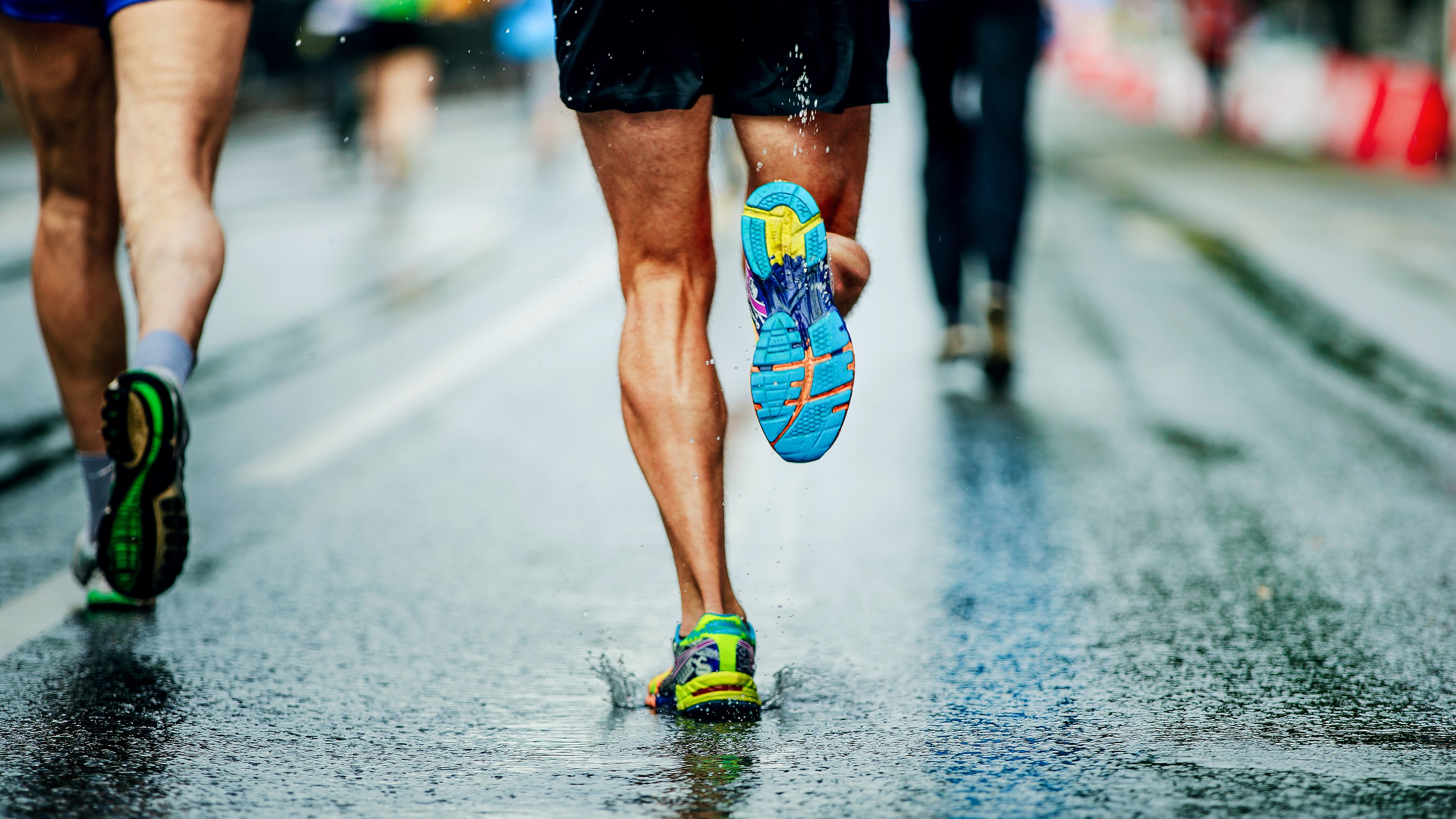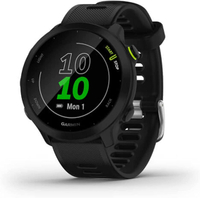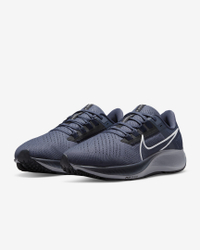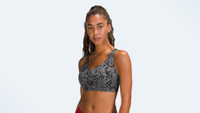How to run a 5K — tips for beginners and beating your record
Here’s everything you need to know.

A 5K race is one of the most popular distances for running races, as it's relatively short, making it very accessible for those who don't run regularly. That said, there are a few things you should know before setting off on the course.
Whether you’re hoping to run your first 5K or get faster over the 5K distance, we’ve got everything you need to run stronger than ever. A 5K is 3.1 miles in distance and is generally considered to be a good goal for total newbies, as well as a fast, snappy race for more advanced runners. These should come in handy if you're planning on training for a half-marathon or a Turkey Trot.
Here's everything you need to know about running a 5K.
- The best running shoes
- Best running watches for tracking your pace
How long will it take to run a 5K?
The average 5K finish time is 39 minutes, according to a study by runrepeat and the IAAF. For men, the average is faster, at 35 minutes and for women, the average is slower at 41 minutes. The world record in the 5K is 12:35.36 for men, set by Joshua Cheptegei, and 14:06.62 for women, set by Letesenbet Gidey.
How to find the best 5K training plan for you
Whether you’re just trying to get around the course, or you’ve got a time goal in mind, the best way to reach your goal is to follow a training plan. There’s a number of free training plans on the market, but if you’ve got a newer Garmin running watch, there will be a number of coaching plans you can download straight to your watch from the Garmin Connect app.
Some of the other best running apps on the market also have training plans you can download straight to your phone. Apps like Strava, the Nike Run Club app, and Map my Run (for users that subscribe) all have training plans that you can follow from the app. There’s also a number of extremely popular Couch-to-5K apps, that will take you from not running at all to getting around your first 5K in as little as nine weeks.
The right training plan for you will depend on both your current running level and your goal. If you’re a complete beginner, opting for a sub-20 minute 5K plan might be a little challenging, but for more experienced runners, the Couch to 5K training plan might be a little basic. Most training plans will gradually increase your mileage each week as you approach race day and will be around six to nine weeks long. A good training plan will give you a mix of faster runs to work on your speed, and longer runs to work on your strength.
Sign up to get the BEST of Tom's Guide direct to your inbox.
Get instant access to breaking news, the hottest reviews, great deals and helpful tips.
What to wear when running a 5K
If you’re running your first 5K, getting the right gear for race day can make all the difference. Sure, there are endless gadgets and gizmos you can buy, but in our eyes, the essentials are a watch, a pair of running shoes, and a sports bra for female runners.
Sure, you don’t necessarily need a running watch, but using one for your training can help you keep track of your progress and more accurately record your pace, distance, and splits on the run. We think the best running watch for beginner runners is the Garmin Forerunner 55, which has a bright screen that’s easy to see on the run, built-in GPS, and the ability to download coaching plans to the watch. If it’s out of your price range, or you’re looking for something a little more high-tech, have a browse of the best running watches here.
Garmin Forerunner 55: $199.99 @ Amazon
The Garmin Forerunner 55 is a brilliant running watch for beginners and more experienced runners alike. It's got a lot of Garmin's more premium features, for a fraction of the price, including Training Status to track progress, Training Load to see workouts over a seven-day period, and Training Effect to measure anaerobic and aerobic. It also supports sleep, stress, blood oxygen saturation, and menstrual cycle tracking.
In terms of running shoes, the best running shoes on the market right now in our opinion are the Nike Air Zoom Pegasus 38. They are a brilliant beginner running shoe, but will also suit quicker runners. It's a fantastic all-rounder, it’s well-built and durable. If they’re not for you, we’ve rounded up all of the best running shoes on the market here.
Nike Air Zoom Pegasus 38: $120 @ Nike
The Pegasus is a workhorse - you can wear it for a marathon, your first 5K, and pretty much everything in between. For a shoe to be on its 38th iteration, it must be doing something right and with the Pegasus, you're buying reliability. Shop the women's Nike Air Zoom Pegasus 38 here.
If you’re a female runner, another absolute essential before heading out the door is a good sports bra. The best high-impact sports bra for running is the Lululemon Enlite bra. The support it offers is second to none and it comes in a range of cup sizes — from an A to an E. We’d opt for the traditional version rather than the front-fastening, as we found the front zipper caused chafing during sweaty workouts. If you’re looking for something more affordable, the Brooks Dare Crossback also made it onto our list of best sports bras.
Lululemon Enlite Bra: $98 @ Lululemon
While it's definitely on the more expensive side, the support offered with the Lululemon Enlite Bra is second to none. It's available in a large number of bra sizes, it's lightweight and breathable and the hook-and-eye fastening makes the bra easy to get on and off, even when wet.
How to run a 5K faster
If you’re looking to get faster over a 5K distance, you’ll need to add speedwork and strength-training sessions to your plan. While running more miles will help build your endurance, it’s speedwork that will really help you get quicker. For more information on how to add speedwork to your weekly running schedule, take a look at our how to run faster guide. That said, if you’re following a training plan, it’s likely to have at least one speed session per week to help you improve.
Strength training is also an important part of running faster. If getting faster is the goal, focus on a sprinter’s workout of plyometric movements, like jump squats or box jumps, that work on the explosive power in your muscles.
You might also not be getting faster because you’re constantly taking time out with a recurring injury. If this is the case, it’s worth working with a trainer to address the problem, and then following a careful training plan to ensure you’re not overloading the body and doing too much, too soon. Check out our beginner's guide to running — top tips from a running coach for a good plan.
What should you eat before running a 5K?
Unlike a half marathon or a marathon, you won’t need to load up on carbs before a 5K. That said, the right pre-race nutrition is important and will prevent you from struggling with stomach issues on the course. Experts recommend that you get to the start line well hydrated, but this means ensuring that you’re hydrated for the days before the race, rather than downing water on the morning of the race.
The chances are you’ll have enough energy in your muscles to not eat anything on the morning of the race, but if you do prefer to eat, opt for something light one to two hours before the start of your 5K. Keep the meal low in fiber and fat, as they can take a while to digest, and opt for something like porridge, or peanut butter and toast. Make sure you experiment with what works best for you and your body before race day — the golden rule is nothing new!
On the course, you won’t need to worry about gels or sweets to get you around the course. Also, be careful not to take on too much water on the course. If you’re well-hydrated going into the race, you shouldn’t need to take on too much liquid on the run. As a general rule, sip water to thirst; don’t stop at every drink station because other runners are.
If running a 5K gets you interested in running longer distances, be sure to check out our guides on how to train for a half marathon and how to train for a marathon.

Jane McGuire is Tom's Guide's Fitness editor, which means she looks after everything fitness related - from running gear to yoga mats. An avid runner, Jane has tested and reviewed fitness products for the past five years, so knows what to look for when finding a good running watch or a pair of shorts with pockets big enough for your smartphone. When she's not pounding the pavements, you'll find Jane striding round the Surrey Hills, taking far too many photos of her puppy.



